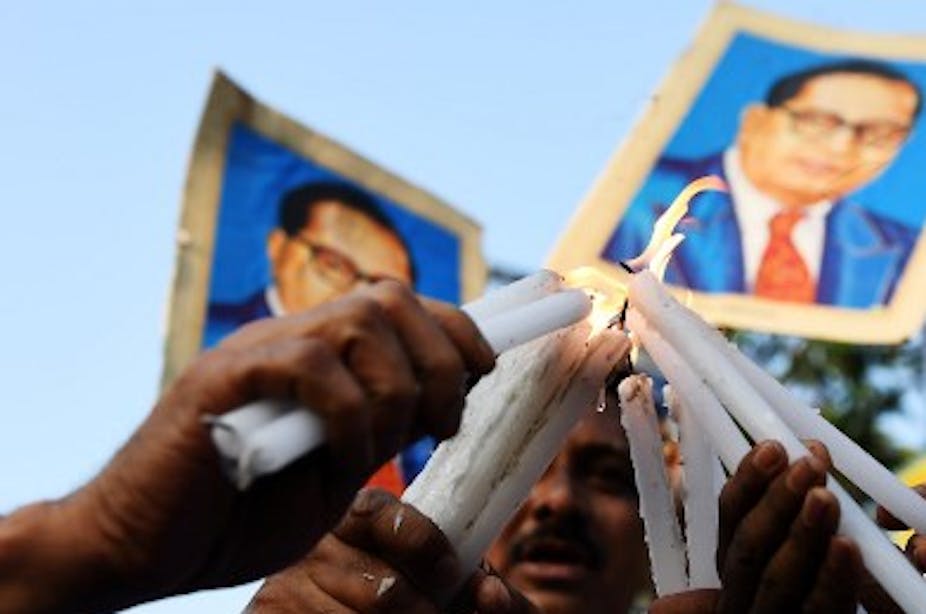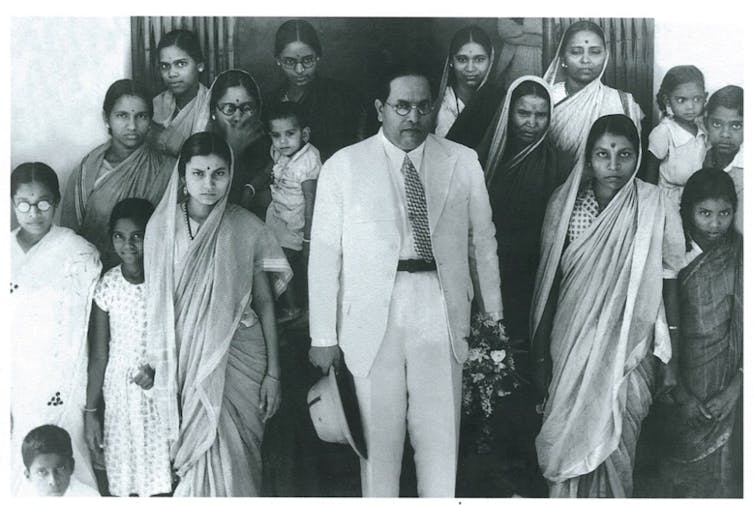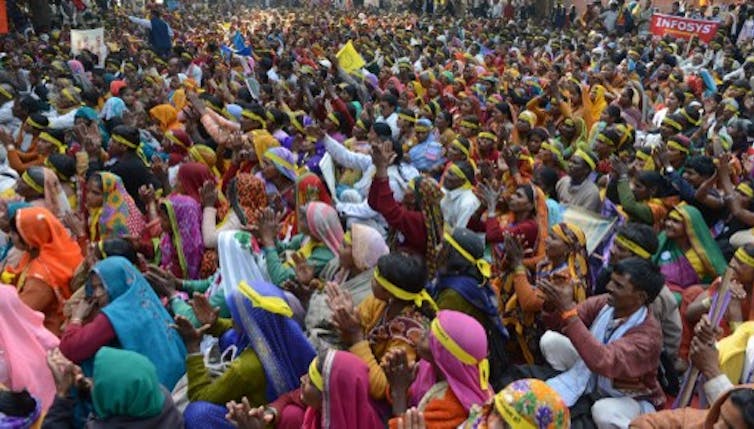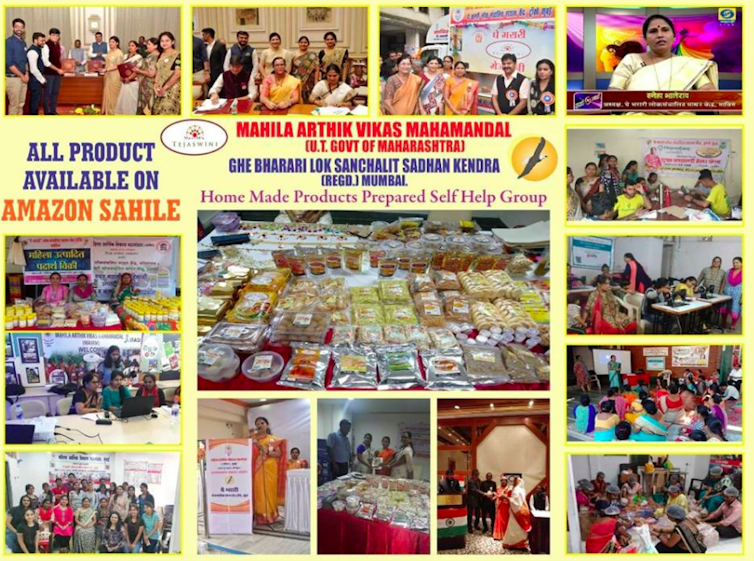Despite political setbacks in India, Dalit voices grow stronger

A strong movement since the 19th century
The anti-caste movement, with the Dalit movement at its forefront, has been central to the democratisation of the Indian society. Since the 19th century, the Dalit movement has attacked the system of exploitation at all levels – culturally, economically and politically.
This critical questioning of the caste hegemony and the exploitation of the lower-caste labour continues to guide the Dalit politics to this day. The recent alliance between the Samajwadi Party (led by Akhilesh Yadav) and the Bahujan Samiti Party (led by Mayawati) in UP reveals a strong coalition of citizens who believe in the anti-caste stance.
Yet Dalit political affiliations and behaviour are difficult to cast under the same monolithic pattern. Dalits themselves comprise of a range of castes and many of these are subject to the same system that maintains a certain hierarchy between each group. This can prevent the communities from forming alliances for political representation.
My research has shown that caste members can vote according to regional differences or clientelism toward political parties. For example, votes by Dalit Buddhists in Maharashtra are divided along Dalit-Bahujan political parties, whereas the Dhangar (shepherd), Matang (ropemaker) and Charmakar (cobbler) of Hindu castes in the same state traditionally favoured Shiv-Sena-BJP alliance, located on the right end of the Indian political spectrum.
Challenging the upper castes
Many still follow the footsteps of Bhimrao Ramji Ambedkar alo called Babasaheb Ambedkar, a scholar born into an untouchable caste who went on to become the first law minister of independent India and also crafted the constitution of India.

One of his major achievements was to convince Dalit populations to leave Hinduism for Buddhism, as he realised that as an organised religion, Hinduism promotes the caste system. This is a threat for the Hindu fundamentalist ideology, which perceives any Dalit assertion as a challenge to upper-caste authority.
This is why parties such as the BJP have either tried to lure the traditionally Hindu Dalit votes or have systematically suppressed the Dalit voices of dissent. For example, it has been reported that millions of Muslims Dalits and Dalit women may have not being able to vote despite being eligible to do so.
The “Akola pattern”
A year and a half ago, Prakash Ambedkar – grandson of Babasaheb Ambedkar – who has successfully led a political party in Akola district of Maharashtra for three decades, re-emerged as a strong voice.
In 2018 he created Vanchit Bahujan Aaghadi (VBA), “the party of excluded masses”. With the goal of appealing to all minorities, including tribes, women and transgenders, he sought an alliance with Asaduddin Owaisi’s All-India Majlis-e-Ittehadul Muslimeen, a Muslim-dominated party.
His political strategy proved successful in the district, and it is now dubbed the “Akola pattern”.
Prakash Ambedkar, grandson of Dr . Babasaheb Ambedkar reacts to riots that toke place in Maharashtra in 2018.
Dalits and a broad range of other excluded castes and tribes extended their support to the VBA. For example, the 10-million-strong Dhangar caste, which is categorised as nomadic tribes, previously loyal to the BJP, has sought an alliance with the VBA, hoping to improve its status within the castes and quota system in India.
Despite such efforts, a strong coalition of BJP and its allies is expected to sweep the votes in Maharashtra.
Dalit women’s voices
In this struggle for rights and to build a coalition that can stand up to upper-caste and Hindu far-right, Dalit women play a critical role. Mayawati is one example of Dalit leadership, and there is also a long history of Dalit women’s resistance to both gender and caste discrimination.
My research on the influences of Dalit women’s activism on policy process and grassroots mobilisation in Maharashtra, a state of 112 million residents on India’s west coast – has shown that Dalit women’s political involvement goes beyond elections and traditional political processes.

Influencing public policies in a Mumbai slum
As I witnessed it on recent fieldwork in urban slums in Mumbai, lobbying and advocacy can influence the policy process and empower Dalit women. Even when activists have a minuscule presence in the committees formed by the government to formulate policy and programs, they actively question members of parliament about misappropriation of budgets intended for Schedules Castes or program implementation gaps.
Activists also use their political networks to link Dalit women beneficiaries to government development programs. In so doing, Dalit women can move beyond the caste-based social network of politicians and bureaucrats, reaching leaders of ministries and departments.
Pradnya (name changed)n an activist I have met during my research worked her way through such networks to to improve women’s livelihood through what we call a strategic partnership or “velvet triangle”.
With the support of the Women’s Economic Development Corporation (MAVIM), which implements micro-credit schemes for women self-help groups, she organised a federation of 200 self-help groups of Dalit women in the slums of south-central Mumbai.
It functions as an independent, community-managed resource centre (CMRC) under the MAVIM scheme. While her education and political awareness have been crucial, so too is the support of the other Dalit women members from the community. One of them worked in the corporate social responsibility (CSR) department of a supermarket chain and gave tips to the federation about how to make and effectively market products.
From a slum to Amazon
Pradnya recently obtained funds for every group associated with her federation. With the funds they started home-based activities such as food stalls in local markets and packaged foods. Some of the products made within this initiative are now sold on Amazon. In terms of politics, Pradnya states that majority of the women’s groups in her federation have voted VBA.

Pradnya’s community-managed resource centre is just one example of how Dalit women can gain confidence and obtain policy benefits with the support from other Dalit women positioned in strategic locations.
Dalit women are aware of their political power and right to representation as well as their share in the wealth of the nation. They may have to struggle to seek these benefits but they seek out these benefits strategically. As the long history of Dalit activism in India reveals, there are many other ways than elections for oppressed minorities to fight and make a difference.

Phd Student, Université de Genève
AUTHER.![We The People ! [ Daily News ]](https://blogger.googleusercontent.com/img/b/R29vZ2xl/AVvXsEi7PNflLYO2id_pgKevcLALLVghNAUKitpe3VQpV5fJatRfWJCD5mtlJzat6fUgV7ymgMyAe1yNdVgoDeLbqc_5gXJpSzYE50pYDire_RBxd0JWLL96a-4NaYWD4QJ3EAFuXN6gNo1L5gs/s1600/LogoMakr_5zKJMi.png)











No comments:
Post a Comment